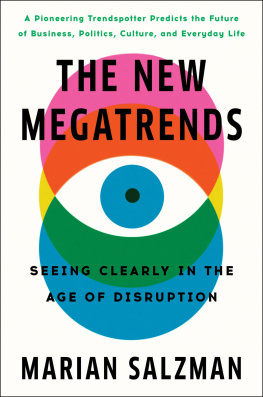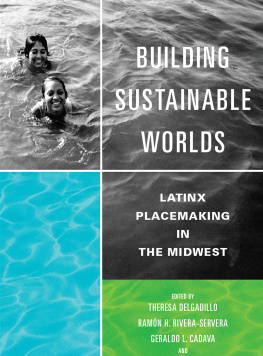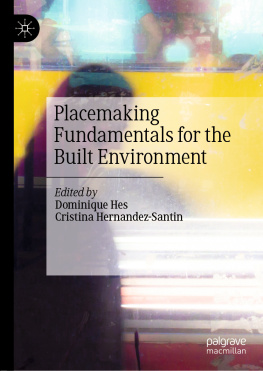Pop-Up Civics in 21st Century America
How people associate and engage in politics in the 21st century is notably different from similar behaviors in the 20th century. Ryan Salzman examines the political potential of placemaking, an increasingly popular set of behaviors that were unfamiliar to the American public until the last two decades. Placemaking exemplifies a shift that is occurring in the way Americans participate in their political system, and it appears that that participation is increasingly effective in the context of American democracy.
Informed by interviews, surveys, and material review, Salzman compares the process of placemaking to traditional political and associational behaviors, providing evidence that placemaking has tremendous political potential. Placemaking is an innovative set of behaviors, largely understood to influence economic and community development. From painting crosswalks to community gardens, Americans are engaging in their communities with real political and civic consequences. This text expands our understanding of placemaking, updating the way we think about civic and political engagement in the 21st century.
Pop-Up Civics in 21st Century America: Understanding the Political Potential of Placemaking will be of interest to those who study and research political behavior, civil society, arts and politics, social movements, and urban public policy.
Ryan Salzman is Associate Professor of Political Science at Northern Kentucky University. His teaching and scholarly interests center on democracy. In addition to his professional accomplishments, Ryan is an elected official and community activist who has witnessed the power of placemaking firsthand.
Routledge Research in American Politics and Governance
Congressional Communication in the Digital Age
Jocelyn Evans and Jessica Hayden
Reforming the Presidential Nominating Process
Front-Loadings Consequences and the National Primary Solution
Lisa K. Parshall
Public Debt and the Common Good
Philosophical and Institutional Implications of Fiscal Imbalance
James Odom
Removal of the Property Qualification for Voting in the United States
Strategy and Suffrage
Justin Moeller and Ronald F. King
The Rise of the Republican Right
From Goldwater to Reagan
Brian M. Conley
Interest Group Design
The Foundation and Evolution of Common Cause
Marcie L. Reynolds
Pop-Up Civics in 21st Century America
Understanding the Political Potential of Placemaking
Ryan Salzman
For more information about this series, please visit: www.routledge.com/
Pop-Up Civics in 21st Century America
Understanding the Political Potential of Placemaking
Ryan Salzman
First published 2021
by Routledge
52 Vanderbilt Avenue, New York, NY 10017
and by Routledge
2 Park Square, Milton Park, Abingdon, Oxon, OX14 4RN
Routledge is an imprint of the Taylor & Francis Group, an informa business
2021 Taylor & Francis
The right of Ryan Salzman to be identified as author of this work has been asserted by him in accordance with sections 77 and 78 of the Copyright, Designs and Patents Act 1988.
All rights reserved. No part of this book may be reprinted or reproduced or utilised in any form or by any electronic, mechanical, or other means, now known or hereafter invented, including photocopying and recording, or in any information storage or retrieval system, without permission in writing from the publishers.
Trademark notice: Product or corporate names may be trademarks or registered trademarks, and are used only for identification and explanation without intent to infringe.
Library of Congress Cataloging-in-Publication Data
Names: Salzman, Ryan, author.
Title: Pop-up civics in 21st century America : understanding the political potential of placemaking / Ryan Salzman.
Description: First [Edition] | New York : Routledge, 2021. | Series: Routledge research in American politics and governance ; volume 26 | Includes bibliographical references and index.
Identifiers: LCCN 2020041662 (print) | LCCN 2020041663 (ebook) | ISBN 9780367260576 (Hardback) | ISBN 9780429291265 (eBook) | ISBN 9781000328936 (Adobe PDF) | ISBN 9781000328967 (mobi) | ISBN 9781000328998 (ePub)
Subjects: LCSH: DemocracyUnited StatesCitizen participation. | Community developmentUnited StatesCitizen participation. | NeighborhoodsSocial aspectsUnited States.
Classification: LCC JK1759 .S32 2021 (print) | LCC JK1759 (ebook) | DDC 323/.0420973dc23
LC record available at https://lccn.loc.gov/2020041662
LC ebook record available at https://lccn.loc.gov/2020041663
ISBN: 978-0-367-26057-6 (hbk)
ISBN: 978-0-429-29126-5 (ebk)
Typeset in Garamond
by Apex CoVantage, LLC
For Catherine
It is difficult to explain how one goes from enjoying a cold beverage in a temporary park in an alley behind a vacant building to writing a research monograph about people who spend time with others in temporary parks behind vacant buildings. One thing is certain: no one goes on a journey like this alone.
I first want to acknowledge my community of Bellevue, Kentucky. My neighbors provided tremendous encouragement and understanding for us as a family and me as a writer. Settling in the Cincinnati area inspired this research project. I am a witness to the power of placemaking, and we have worked to capitalize on what weve learned in our community. There are so many people worthy of thanks, but Kevin Wright and Joe Nickol must be called out. Thank you, gentlemen, for feeding my curiosity. Thank you for sharing your insight and leading by example. And a super big thanks for contributing to this text in so many ways, including the photographs featured throughout.
To my students, colleagues, and administrative patrons at Northern Kentucky University (NKU), I am so grateful. My students inspired this book project through vibrant dialogues about placemaking and democracy. They convinced me that what I saw was worthy of further investigation, regardless of whether other democracy scholars saw potential in placemaking as political phenomena. My colleagues cheered me on, expressing interest and encouragement. They provided endless advice around the availability of financial resources and the book publication process. And the NKU administration supported me through professional development grants, a summer fellowship, and a sabbatical. I am constantly impressed by everyone at NKU, and for that I am thankful.
Marisa Yerace deserves special mention among the many students I worked with at various stages of this project. Ms. Yerace was recruited to be part of the first iteration of this work after she made the fortunate mistake of coming to my office to talk for hours about placemaking and the research project I was thinking about initiating. She agreed to work with me, and I still congratulate myself for making such a good decision. She is the best writer I have ever coauthored with, and she kept the project moving forward in the early days. Other students participated in the project along the way Joy Kleisinger and Jarett Lopez and to them I owe a debt of gratitude as well.










